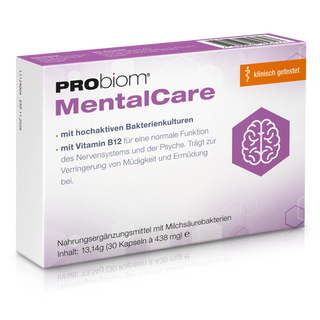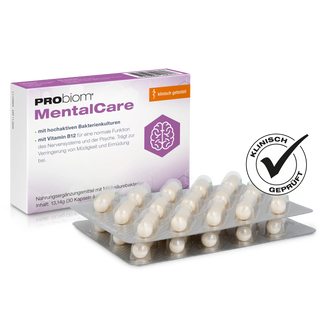Probiotics are more than just a health trend – they are among the most researched dietary supplements when it comes to intestinal health, the immune system, and general well-being. However, not every probiotic works the same. The key is choosing the right strain for the specific symptoms .
In this article you will find a clear list of probiotic strains and their proven areas of application , supplemented by current scientific findings and practical advice on how to take them.
What are probiotics?
Probiotics are living microorganisms—usually lactic acid bacteria or yeasts—that can have beneficial health effects in humans when consumed in sufficient quantities. They are often found as dietary supplements or in fermented foods.
The focus is particularly on their influence on the intestinal flora , the immune system , but also on skin , allergies and mental health (keyword: gut-brain axis).
List: Probiotic strains and their effects on diseases
This table shows you which probiotic strains have proven effective for certain conditions and is based on current studies and medical recommendations.
| Illness / Symptom | Recommended probiotic strains | Effect / Notes |
|---|---|---|
| Irritable bowel syndrome (IBS) | Lactobacillus plantarum 299v , Bifidobacterium infantis 35624 , B. longum Rosell®-175 | Reduction of bloating, pain, diarrhea or constipation |
| Acute diarrhea | Saccharomyces boulardii , Lactobacillus rhamnosus GG | Shortens the duration, especially in children |
| Antibiotic-associated diarrhea | Saccharomyces boulardii , Lactobacillus rhamnosus GG | Protects the intestinal flora during antibiotic therapy |
| Clostridium difficile infection | Saccharomyces boulardii | Useful in conjunction with antibiotic treatment |
| Ulcerative colitis | E. coli Nissle 1917 , VSL#3 | Suitable for remission maintenance |
| Crohn's disease | E. coli Nissle 1917 | Limited data, can be used as a support |
| constipation | Bifidobacterium lactis DN-173 010 | Promotes intestinal activity |
| Traveler's diarrhea | Saccharomyces boulardii , Lactobacillus acidophilus | Take prophylactically before traveling |
| Neurodermatitis / Eczema | Lactobacillus rhamnosus GG , Bifidobacterium lactis , L. paracasei LP-33 , GMNL-133 | Anti-inflammatory effect, especially in children |
| Allergies (hay fever, food, house dust) | Lactobacillus paracasei LP-33 , GMNL-133 , L. rhamnosus GG | Stabilize the immune system, reduce allergic symptoms |
| Urinary tract infections (women) | Lactobacillus rhamnosus GR-1 , L. reuteri RC-14 | Support the vaginal flora, reduce the risk of relapse |
| Mental Health & Sleep | Lactobacillus helveticus Rosell®-52 , Bifidobacterium longum Rosell®-175 | Positive effects on stress management and sleep |
| Depression / anxiety | L. helveticus R0052 , B. longum R0175 | According to studies, they have an anti-anxiety and mood-enhancing effect |
| Oral health (bad breath, tooth decay, gums) | Streptococcus salivarius M18 , Lactobacillus reuteri DSM 17938 | Inhibit harmful germs, improve oral balance |
| Acne / skin blemishes | Lactobacillus rhamnosus GG , L. paracasei | Reduce skin inflammation |
| Premature babies – NEC prevention | Bifidobacterium breve , Lactobacillus acidophilus | Reduce risk of necrotizing enterocolitis (NEC) |
Tips for taking probiotics
Choosing the right product is crucial. Pay attention to:
-
The exact name of the strain (e.g. Lactobacillus rhamnosus GG , not just "Lactobacillus rhamnosus")
-
Adequate dosage (at least 1–10 billion CFU/day)
-
Duration of intake (often several weeks required)
-
Storage: Refrigeration required for some products
-
Quality and study evidence of the manufacturer
Multi-strain products can be helpful if several symptoms occur simultaneously – it is worth taking a critical look at the composition.
Conclusion: Targeted relief of symptoms with the right probiotic
Probiotics offer many opportunities – especially when the right strain is chosen for the specific symptoms. The list above provides a well-founded overview for targeted selection.


















